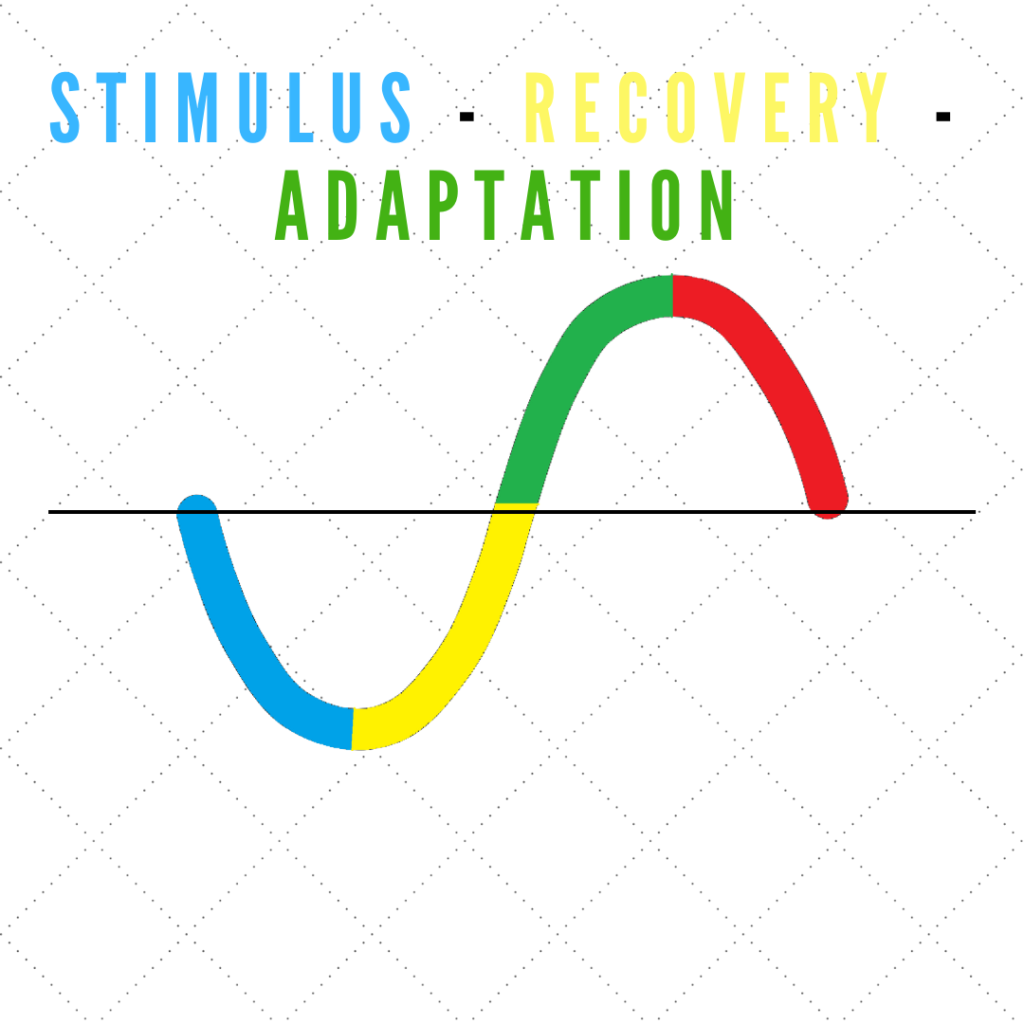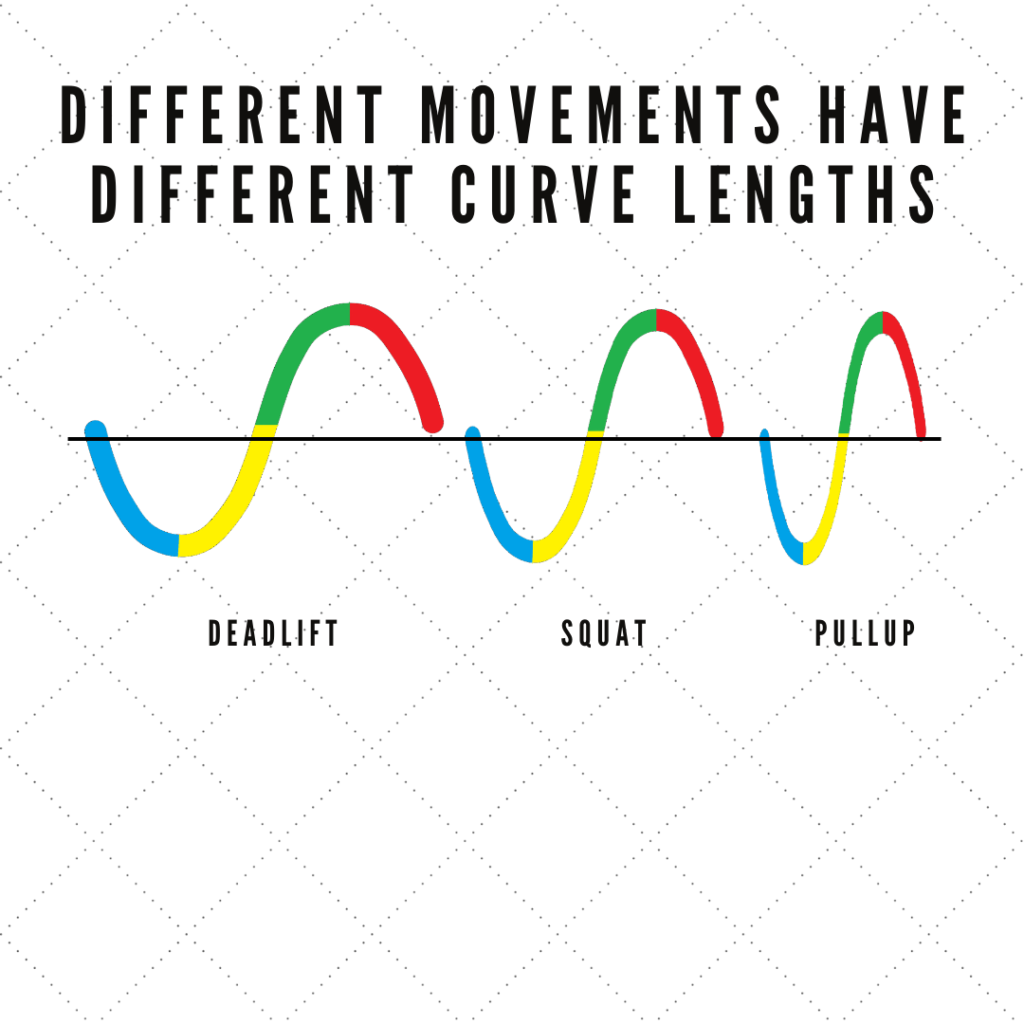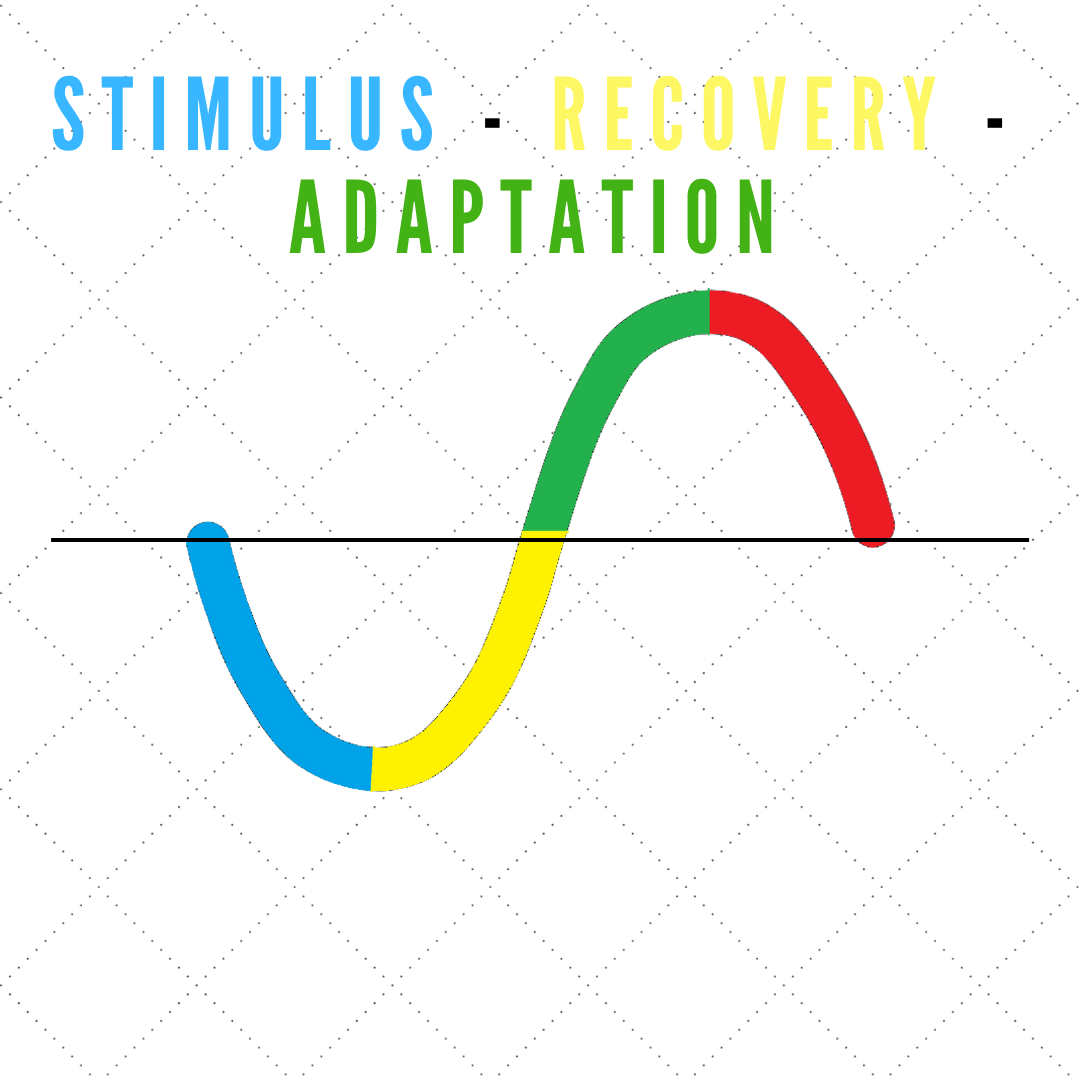As a previous personal trainer through NASM, a current CrossFit Level 2 Trainer, and a physical therapist, I don’t think of strength training and physical therapy as distinctly different things. Perhaps physical therapy brings in a component of some kind of pathology or pain that needs treatment. Ultimately, strength training is a core part of what physical therapists do. This post will cover some important aspects of strength training for physical therapists.
Be Specific
Specificity is a principle of strength training that physical therapists are generally going to be pretty familiar with. We are always asking patients what their goals are and providing interventions towards achieving those goals. In strength training, this is not much different. If we want a particular exercise or aspect of an exercise, we need to perform exercises that work toward that goal. For instance, if a person is strength training to increase their back squat (maybe for a powerlifting competition), a back squat is going to be the most specific. Other squats such as goblet squats, front squats, or overhead squats are going to exercise some similar muscles with slightly less specificity. A different exercise such as a deadlift will also be exercising some similar muscles, however getting less specific. Even less specific would be a back extension on a glute ham developer (GHD) machine. In this way, we can look at a specific goal and find different ways to adjust toward the end goal. In physical therapy this may apply directly in the way of a person coming in with pain while back squatting. If one of the other squatting movements can be performed in the place of the back squat, relatively high specificity is maintained while other aspects can be worked on to decrease pain with the back squat itself.
Overloading
Overloading is a principle of strength training that has a large amount of carryover into physical therapy. In order for an exercise to help a person gain strength or improve function, it needs to be sufficiently difficult to induce an adaptation stimulus. The typical issue with this is if a person is performing an exercise, let’s say for 3 sets of 10, we actually have no idea if that is enough stimulus to be overloading. For more context, what if the exercise being performed for 3 sets of 10 is done at 40 pounds but the person can perform 30 repetitions at 60 pounds? Is this person being overloaded? Probably not. Yes, they will feel the muscles working. However, the more current research will say that fatigue or rating of perceived exertion is a better guide than an arbitrary number of sets or repetitions. Going back to the 3 sets of 10 at 40 pounds example, if this person can perform only 12 repetitions at 40 pounds, then this sets and repetitions scheme would be very appropriate. When relating this to rating of perceived exertion (RPE), if 10 repetitions is a maximum, then the respective RPE is 10. Further, 9 repetitions is an RPE of 9, 8 repetitions is an RPE of 8, 7 repetitions is an RPE of 7, and it gets a little different with lower repetitions, but the concept is similar. At an RPE of 8 out of 10, for instance, this individual is working quite hard. If we go for 3 more repetitions they will not be able to complete the exercise, they are likely slowing down, and there will be no question that they are working hard.
Newer research looks at what percentage of a person’s 1 repetition maximum that hypertrophy can occur, with hypertrophy being the increase in size of muscle fibers. It used to be said that a person needs to work at greater than 60% of their 1 repetition maximum in order to achieve hypertrophy. The updated research shows that a person can be working at any repetition range above 30% of their one repetition maximum and achieve hypertrophy, as long as they perform enough repetitions to get fatigued. Therefore, we can use relatively light weight at 30% of a person’s 1 repetition maximum provided that sufficient repetitions are performed to induce fatigue; in this case it would be a large number of repetitions (perhaps 70 repetitions!). Conversely, a person could also lift 85% of their one repetition maximum for 5-6 repetitions and also achieve hypertrophy. Other repetition ranges can be chosen relative to multiple other factors as well. The important factor being the relative fatigue built up by the exercise. This may guide you better than the particular numbers and allow for adjustments based on how a person is feeling that day (ie – where maybe last week’s RPE of 7 feels like a 9 today and they need to do slightly less; or perhaps last weeks RPE of 7 feels like a 5 and more repetitions are needed today). I would look at repetition or weight maximums as rough guides, while fatigue or RPE is a better indicator for exercise prescription.
Stimulus Recovery Adaptation

An important aspect to understand is the concept of a stimulus recovery adaptation curve. Similar theories are termed the “Stimulus-Fatigue-Fitness-Adaptation Theory” and “Fitness Fatigue Paradigm” though they are all discussing a similar concept. It is the idea that when we perform exercise, we impart a stimulus to our bodies that they must then recover from to eventually become stronger. Doses of fatigue from exercises require time for our bodies to rebuild again in order to eventually be able to handle more. Note in the picture below, a graphical representation of this concept.

As mentioned previously, we do need to load our bodies sufficiently to make sure they are stimulated enough to push the adaptation to become stronger. However, this does not mean that more is better. After each bout of exercise, it takes time for our bodies to recover. Therefore, if we perform an exercise too soon after the previous time, we may be injecting a stimulus from an already fatigued state. Note in the picture below that the second, third, and fourth stimuli occurred during the recovery phase such that the adaptation was not allowed to occur making the resulting adaptation to be actually below the baseline.

An argument may be made that this may actually drive super compensation, which would then cause a larger spike back up to potentially above baseline. However, the picture above shows the general concept, keeping in mind that chronically exercising from a standpoint of fatigue will prevent eventual progress if never allowed to recover.
The tricky part is that different movements have different length curves, meaning based on the movement performed it can be either quicker or slower for our bodies to get to the adaptation phase. Based on Chad Wesley Smith’s book, Scientific Principles of Strength Training, this will change based on the general type of movement performed, if it is a compound or isolated exercise, bilateral or unilateral, strength-based or skill based, or other general factors based on other stressors in an individual’s life or recovery habits.

Based on the variation of ability to recover from exercises, I generally recommend the following frequency for exercises:
Deadlift: 1x/week (or even 1x/2 weeks for individuals who lift the heaviest weight and really exert themselves)
Strict or Overhead Press: 1x/week
Bench Press: 1-1.5x/week (1.5 meaning if done a second time, it should be a lighter weight)
Squat: 2-3x/week
Pulling: 3-4x/week (I would vary this between horizontal and vertical pulling movements; bent over row vs pull-up for example)
Essentially, the more the movement taxes the body, the less it should be done in one week. With deadlifts and overhead presses, these use >80% of the muscles in the body and explains why they should only be done 1x/week or potentially less. This changes with single limb or single joint movements, where there is less of the body moving, less taxing as a result, and therefore could potentially be done more frequently.
As mentioned briefly above, there are other factors to consider as well. It’s not just how long does it take for the muscle to recover, but also general fatigue on the system. How much fatigue is the central nervous system under as a result of the exercise? How much fatigue is a person’s central nervous system accumulating outside of the gym as well? More stress will affect the ability of the body to recover. Further, what muscles are being trained? If these are muscles that recover more quickly, then the recovery time will be less. If the stimulus is more skill-based than strength-based, our central nervous system will also recover faster. The relative amount of fatigue from the exercise compared to how well the body can recover determines the speed of recovery. We can also look at factors like aerobic fitness, age, fitness background, and more as influential on how quickly recovery will occur. So, more is not necessarily better; it depends on the exercise and the individual. Appropriate programming can make a difference on whether or not adaptation is going to occur.
Zooming Out: Periodization
Periodization then follows from the above points. Periodization is the
deliberate manipulation of variables to achieve the result you are looking for. An example of linear periodization that I use often is as follows:
Week 1: Test repetition maximum
Week 2: 3-5 sets of 80% of the repetitions achieved week1
Week 3: 3 sets of 90% of the repetitions achieved week1
Week 4: Retest repetition maximum
This example only manipulates the number of repetitions, but you can theoretically manipulate either the weight or the repetitions to 80% week 2 or 90% week 3; just not both. In this way, we are maximally taxing the body for a specific exercise, then backing off the second week in intensity which allows for more overall sets and repetitions to be performed. Week 3 increases the intensity, so I back off of the number of sets before retesting the original weight for a maximum number of repetitions in week 4. Therefore, if week 1’s repetition maximum was 10 repetitions, if 11 or 12 are done on week 4, then progress was made and week 5 could start over using the higher number of repetitions with the same theme (9-10 repetitions on week 6, 10-11 repetitions on week 7, and retesting again on week 8).
If a person is not using periodization, there may be a couple of things going on. Perhaps they are using the same number of sets, repetitions, and weight every time they perform an exercise. In this way, a person will not be overloading themselves and performing the exercise will keep them at the baseline they achieved when they originally started the exercises. Another example would be performing exercises at 100% intensity all the time. In this case the body is not allowed sufficient time to recover and possibly hindering progress. The closer to maximum effort an exercise is performed, the more muscle fibers are stimulated, which requires more recovery. For this reason some individuals will have a deload week after a max testing week, which reduces repetitions and weights to 50-60% to maintain some of the stimulus but allows the body more full recovery through that week.
Variety
Incorporating appropriate amounts of variety can make a difference in progress while strength training. Vary the exercises too often and there may not be enough repetitions of that specific exercise to sufficiently learn the technique for the exercise. Or, perhaps the relative adaptation that was gained has now diminished before the next time the exercise is performed. If the exercises are not varied enough, then stagnation can occur from a lack of change of the stimulus. For instance, performing 3 sets of 10 repetitions week after week at the same weight keeps a person stuck at only performing that specific amount of an exercise. Variety may not always mean completely changing the exercise; it may be using a different repetition scheme, or a slight modification of the exercise by changing stance width, hand width, or other aspects.
Nutrition Matters
Coming out of PT school, I was fairly confused as to what my role was in regards to nutrition. No, I am not a registered dietitian and that limits the guidance that I can provide. But nutrition is still important. The way an individual fuels their body through nutrition determines how their body can recover. We need sufficient nutrition to ensure the building blocks necessary to build muscles, tendons, and more after exercising has taken place. It is important to make sure people are recovering by providing themselves the building blocks needed via nutrition. Protein being a factor in that, as well as other aspects of nutrition. The stimulus recovery adaptation curves noted above show that recovery from a stimulus is vital and nutrition is a key part of that.
So, if you are not comfortable giving basic nutrition guidance based on your knowledge level, it would be outside of your personal scope of practice. I would recommend either learning some relevant information or working with a nutritionist or registered dietitian that can help the individual towards that goal, especially if there is a comorbidity to consider which requires a higher level of knowledge.
Although there are other aspects of strength training important to physical therapy, these are the items that are at the top of my list.
References
- Howley, Edward T. and Powers, Scott K. Exercise Physiology. McGraw-Hill, 7th Edition. 2009
- Bompa, Tudor. Periodization of Strength Veritas Publications, 1994
- Isratel, Mike; Hoffman, James; and Wesley Smith, Chad. Scientific Principles of Strength Training Renaissance Periodization, 2016
- Istraetel, Mike and Hoffman, James. How Much Should I Train? Renaissance Periodization, 2019
- Schoenfeld BJ, Grgic J, Van Every DW, Plotkin DL. Loading Recommendations for Muscle Strength, Hypertrophy, and Local Endurance: A Re-Examination of the Repetition Continuum. Sports (Basel). 2021 Feb 22;9(2):32. doi: 10.3390/sports9020032. PMID: 33671664; PMCID: PMC7927075.
- Sinnott-O’Connor C, Comyns TM, Warrington GD. Validity of Session-Rate of Perceived Exertion to Quantify Training Loads in Paralympic Swimmers. J Strength Cond Res. 2021 Sep 1;35(9):2611-2615. doi: 10.1519/JSC.0000000000003181. PMID: 31045754.
- Gabbett et al (2015). The training injury prevention paradox: Should athletes be training smarter and harder. Br J Sports Med 2016;50:273–280
- NSCA -National Strength & Conditioning Association, Mike McGuigan Developing Power Human Kinetics, 2017.



